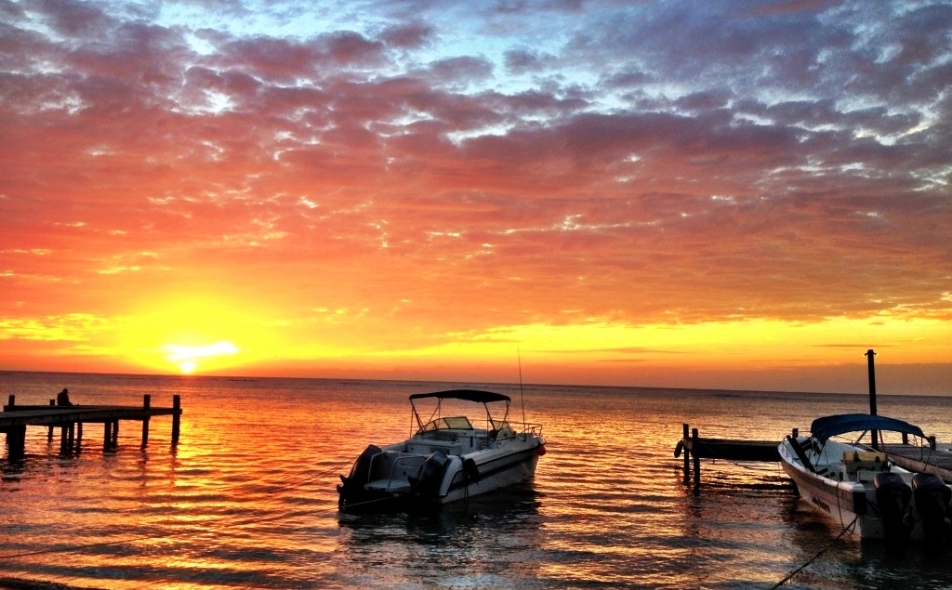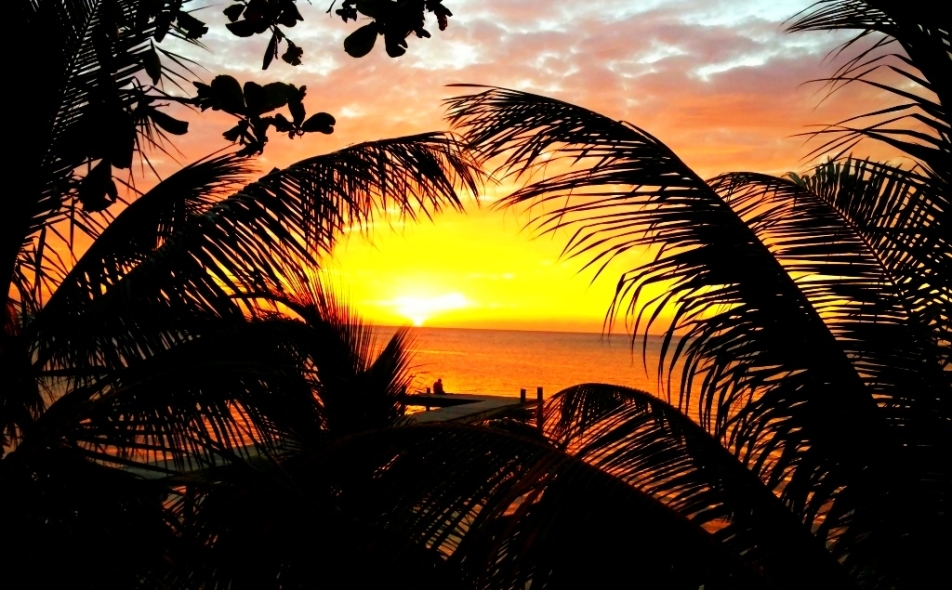Travel Tales Podcast


One week of scuba, seafood, and hammock-swinging on the Caribbean island proved to be just what the doctor ordered.
If I’m going to be on a romantic tropical island solo, you better believe I need a fun, physical activity to fill my days and help me sleep at night. Island boredom and loneliness are not to be taken lightly, no matter how much rum is available.
Islands can be worrisome in other ways as well, namely financially and safety-wise. Generally, the safer and cleaner the island, the more your bank account will take a beating.
While I certainly don’t need five-star accommodations and pampering, I also don’t need to be carjacked anytime soon.
Enter Roatan, Honduras.
Located between the islands of Utila and Guanaja, Roatan is the largest of Honduras’ Bay Islands. It’s a hugely popular dive spot that shares the second largest barrier reef in the world (After Australia’s Great Barrier Reef), and prices are reasonable. Better still, it’s a mere two-and-a-half-hour flight from Miami.
Crime is high in Honduras
While it’s true that crime is high in Honduras, the great majority of it occurs on the mainland, with San Pedro Sula and the capital city of Tegucigalpa getting particularly low marks. But Roatan is not the mainland, and locals are quick to point out that fact. Tourism is the island’s bread and butter, and the last thing the locals want is the golden goose killed by the same news reports of robberies and kidnappings that plague the mainland and scare visitors away.
Roatan is a major cruise line stop, with some days up to four ships unloading passengers onto the island.
West End
A sliver of a town along the Northwest shore.
It’s little more than a single paved street lined with dive shops, restaurants, bars, small hotels, and gift shops hawking everything from T-shirts to local artwork and hand-woven hammocks. West End is the tourist hub for diving and nightlife. It’s where this lone diving fool needed to be.
Splash Inn Hotel and Dive Resort
A small inn with simple but clean rooms located in the heart of West End. I booked two nights at $80/per night before my arrival, and after check-in immediately walked next door to their dive shop to sign up for the next morning’s dives.
I could get a room in West End for as little as $30-40, but I needed to choose my priorities: air conditioning, hot water, wi-fi, etc. are not givens.
Crystal Beach Cabins
A neatly-kept, little cluster of private cabanas each with hot water, a little fridge, and the most inviting hammock ever on the front porch. No A/C, but the ocean breezes and ceiling fan deemed them unnecessary. A local family has owned the property for generations and lives in the apartment above the office. $40 for a cabin. Sold.
I slept like a log every night, and an afternoon nap in a hammock after a full day of diving is right in more ways than I can count.
Nightlife
The West End nightlife consisted of approximately 3 or 4 bars frequented by just about everyone staying in town. Happy hour crowds gather at the north end of the street atSundowners, then eventually work their way south to theBlue Marlin and whatever other bar has a special event that night of the week (karaoke, trivia contest, DJ, live music, etc).
Diving
The diving on Roatan was inexpensive compared to many Caribbean spots. The average cost of a dive came to ~ $25 per tank, all equipment included. I could have lowered the price even more, as Splash Inn offers dive discounts to their hotel guests who stay four nights or more.
I was slightly disappointed in the amount of marine life as compared to say, Belize or Cozumel along the same reef. Although there were plenty of Triggerfish and small groupers common to most reefs, I would have liked to see a few more large fish and reef sharks. I did spot large Green Moray eels, barracudas, lobsters, and an octopus. On one boat, my fellow divers emerged from the water raving about a large eagle ray they saw immediately after I had gotten out of the water. Of course they did. Jerks.
The coral was in relatively good shape, but like much of the Caribbean, bleaching due to pollution and rising sea temps is evident.
The dreaded Lionfish
There is also a newer threat to the reef in the form of the invasive Lionfish, a Indio-Pacific reef dweller that the locals believe got introduced into the Caribbean via Florida some years back. The native Caribbean fish don’t know the Lionfish as a predator, and the invader is gorging itself on the local species. Es no bueno.
The good news is that once the Lionfish’s poisonous spines are removed, it makes for a tasty meal. I did my part to protect the reef by eating Lionfish tacos a couple of times during my stay, and I must say, I was a fan.
West Bay Beach
West Bay is a white sand beach with excellent snorkeling right offshore and it’s lined with large resort hotels.
While West End has more of a small-town backpacker vibe,West Bay is more high end and dare I say, stuffy. The beach was a nice way to spend the day, but I was glad I spent my evenings in West End.
Making new friends
For a guy traveling solo, finding a group to talk, drink, and have dinner with was huge. It made the week that much better.
While thousands of tourists spill onto the islands every day via the cruise ships, by nightfall the hordes in fanny packs have returned to their boats and Roatan quiets considerably. I made fast friends with a trio of Canadian women, a German couple, a young guy from Belarus, and another friendly dude from Ohio who were all staying in town the same week I was. Though we never made set plans, eventually we ran into each other almost every night along the main drag and ended up hanging out.
Weather and Insects
The weather was typically tropical, although early in the week I seemed to have caught the tail end of the rainy season, which typically runs from October-February. While I was comfortable without A/C in my cabin, I hear it’s a must when summer rolls around. Another must is insect repellant, as the mosquitoes and sand flies are notoriously hostile.
Food Prices
A typical lunch was usually in the $5-10 range, with dinnermoving up to around $10-15 for a sit-down meal. I ate seafood nearly every night and was not disappointed. Beersare generally $2 everywhere, and English is widely spoken.
All and All
Those who don’t dive or snorkel may be hard-pressed to find something to do after a few days. For the one week, I was content with good diving, good food, good weather, good people, and good prices.
It’s all good.
- U.S. State Dept.
where I learned San Pedro Sula is one of the most dangerous cities in the world. - Skyscanner.com
Used to check flights going to Roatan - CM Airlines
A tiny domestic carrier for Roatan. $125 paid for a 45-minute one-way puddle jumper to the island - Splash Inn Hotel and Dive Resort
1st accommodation - Crystal Beach Cabins
2nd accommodation - C-Level Bar
A tiny bar connected to a dive shop in West Bay Beach - Cafe Escondido
Run by a pair of couples, one Canadian and one Australian. They make a killer breakfast





